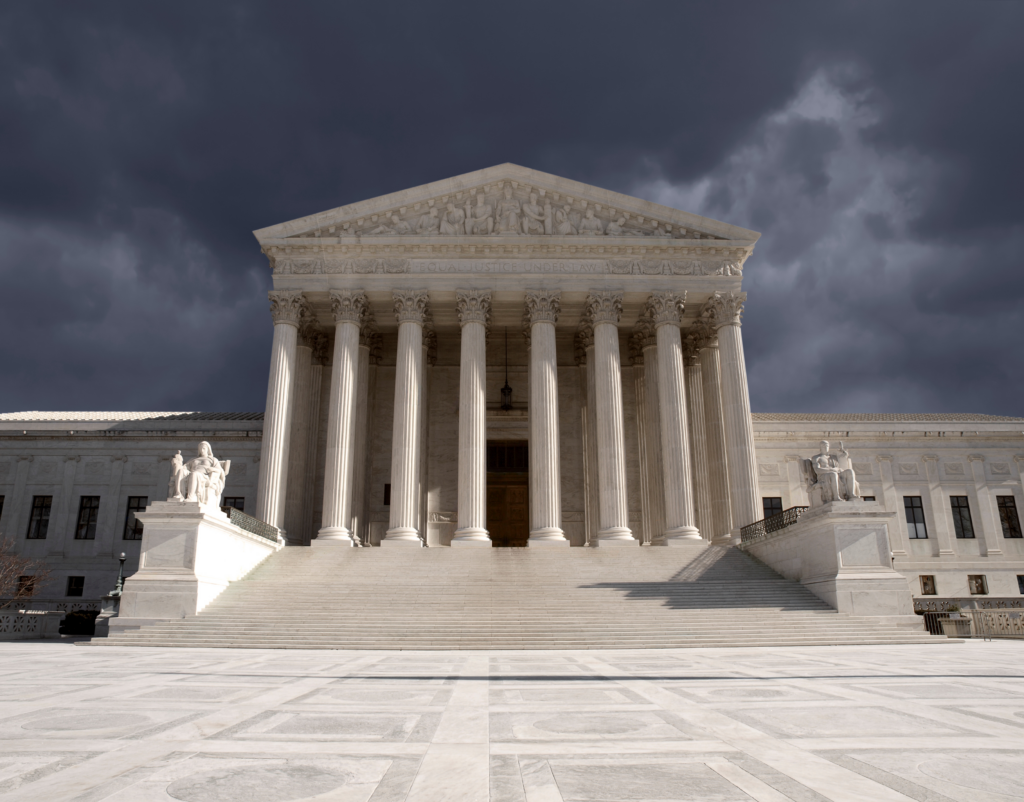
The U.S. Supreme Court heard oral argument Monday in two Louisiana redistricting cases consolidated into one — Louisiana v. Callais and Robinson v. Callais — centered on the state’s newly minted second majority-Black congressional district.
Should SCOTUS rule against the state of Louisiana, it wouldn’t just wreak havoc on the Pelican State — causing lawmakers to go back to the drawing board and, once again, come up with a new congressional map — but it could threaten the future of the Voting Rights Act (VRA) altogether, effectively striking down Section 2, which allows people to sue over racial discrimination in voting or redistricting.
At the heart of the legal issue: When Louisiana passed its new map with the majority-Black 6th Congressional district, did it create an unconstitutional racial gerrymander, as race was the predominant factor in drawing the district?
When a new map was passed in 2024 with two majority-Black districts — to comply with a court order — it was almost immediately met with a legal challenge from a group of white voters, who argued that it was unconstitutional. A federal district court agreed and struck down the new map last April, ordering the legislature to draw a new one. The state appealed to SCOTUS, asking them to pause the district court’s ruling and allow Louisiana to keep its new map with two majority-Black districts in place — at least until after the 2024 election.
During oral argument, Louisiana’s lawyers laid out their chief stance. “We’re in the business of complying with federal court decisions, and when they told us that we needed to draw a second majority black district, that’s what we did,” Louisiana Solicitor General Benjamin Aguiñaga said shortly after opening statements.
Aguiñaga made a noteworthy admission in laying out the argument for why Louisiana’s map should remain. He said the state feels that Section 2 of the VRA is unconstitutional, but because they lost that argument in previous redistricting battles, and are now complying with the court’s ruling, the map shouldn’t be changed.
To rebut the claims from the plaintiffs that Louisiana drew their map strictly to give the state a second majority-Black district, Aguiñaga leaned hard on the argument that lawmakers drew their map with politics in mind — specifically to protect the districts represented by House Speaker Mike Johnson (R), along with Reps. Steve Scalise (R) and Julia Letlow (R).
In other words, the case brought out how states, in redistricting cases, using political considerations like these to draw maps is seen as legitimate, unlike using race. The notion that lawmakers should be required to prioritize fair representation for voters, of course, is nowhere to be found.
Among the biggest questions the justices kept coming back to is that of court orders — and if following a court’s order is a good enough reason for a state to draw a new map. Though some of the conservative justices cast doubt on this, Justice Elena Kagan said that Louisiana was not really in a position to ignore two court rulings that ordered the state to draw a new map that complies with Section 2 and doesn’t dilute the votes of Black voters. Aguiñaga added that the state used its “breathing room” to draw a new map that served its political purposes — like protecting Johnson’s and Scalise’s seats.
At a time when the Trump administration has been widely accused of defying orders from judges, Justice Kentanji Brown Jackson also seemed concerned about the issue. “The question is, did [the state] believe that a court was ordering them to do it?” she asked. “I am sort of concerned… and I want you to clarify it: that a court order compelling you to do something is not a good reason for you to do it?”
Though the justices didn’t seem likely to order the state to draw another map, which would essentially invalidate Section 2 of the VRA, the possibility is always there. “I just don’t think this is the case to do that,” Michael Li, senior counsel for the Brennan Center, recently told Democracy Docket, citing a recent case in which the court found that “the legislature gets the presumption of good faith.”
